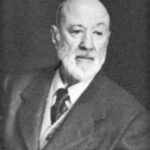In Charles Baudelaire’s ‘Correspondences’, with direct reference in the title to the Swedenborgian concept, he reveals the connection between Nature and the Metaphysical world. Synathesia is said to “put the reader in contact with a forceful sensory presence, a primitive wholeness or synthesis of impression” (Hassan, 439). Through synathesia – in which sounds, colors, and scents are tied together to create mental images, where all senses are stimulated through the mind’s eye Baudelaire transfers a dramatic French Symbolist impression of Art and Nature onto the reader.
In the lines ‘corrupted, rich, triumphant, full’, ‘perfumes, colours, sound’ and ‘Frankincense, musk, ambergris, Benjamin’ Baudelaire uses the rhetorical device asyndeton for dramatic effect; it represents the infinite list of sensory experiences that one can relate to. These lists that can go on and on are metaphorical for the connection of the senses to one’s Self. These lines are also an example parallelism, in which all words are related to the poem’s meaning as a whole, and the symbolism behind it; besides the parallelism these are also an amplification of the main concept of the poem – sensory experience connected to metaphysical importance. Hypozeugma is seen in the line with ‘perfumes, colours, sounds’ – all correspond with each other and are developed throughout the poem with interrelated examples.
The antithesis is present with the contrasting ‘corrupted’ yet ‘triumphant’ senses; the ‘confused speech’ of the columns, while difficult to understand, sing the ‘rapture’ of the soul with the relatable sensory experience of being human. The ‘grove of symbols’ that one may walk through one’s entire life is a metaphor for the connection between all things outside of oneself to all things inside oneself; everything that man experiences, perceives, and senses, are all a gateway into one’s soul – the key is to observe everything and realize the connection. The ‘temple of nature‘ and ‘grove of symbols’ in which man walks may be also be seen as metaphorical to Man and the relation of the body (or temple, which houses the soul) to what surrounds.
The use of chiaroscuro can be seen when the unity of the profound, shadowy echoes are said to be ‘vast as the night, as sunlight’s clarity’; comparing night and day to the blending of senses. Throughout the poem synathesia is used with ‘long echoes’ and the ‘living columns’ that breathe ‘confusing speech’; with ‘perfumes, colours,’ and ‘sounds’ that correspond; with ‘odours’ that are ‘fresh as a baby’s skin’; with green meadows and ‘mellow’ oboes. These ‘infinitely vast’ sensory experiences sing ‘the sense’ rapture, and the soul’s’. Baudelaire’s poem is no doubt a symbolic representation of the connection of Self to its surroundings; with his use of metaphor, esoteric language, an ample amount of rhetorical devices, poetic chiaroscuro, and synathesia, he takes the reader on a journey through nature’s correspondence with consciousness.
Works Cited
Hassan, Ihab H. Baudelaire’s “Correspondences”: The Dialectic of Poetic Affinity. The French Review 27 (1954): 437-445. JSTOR. http://links.jstor.org



